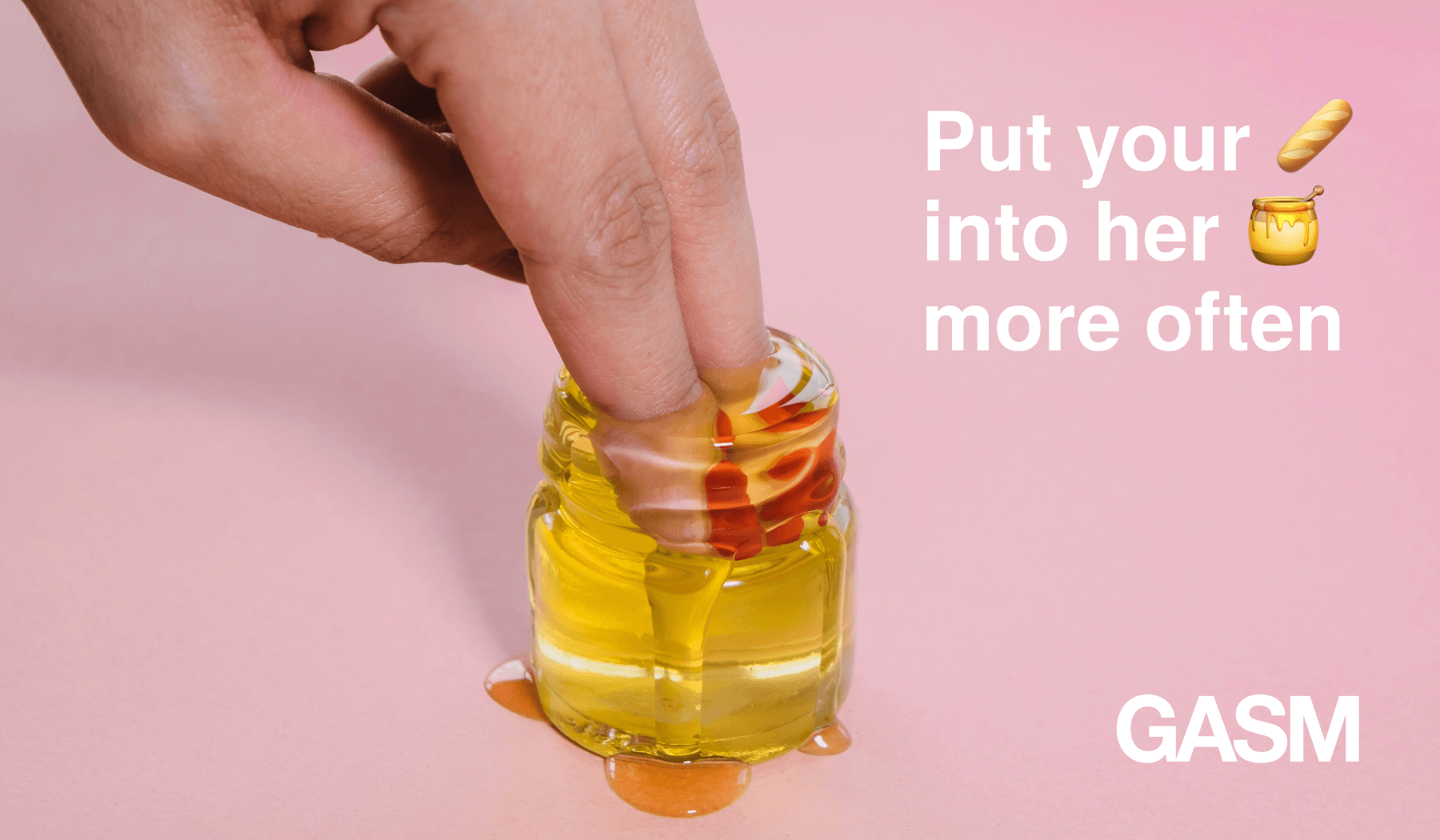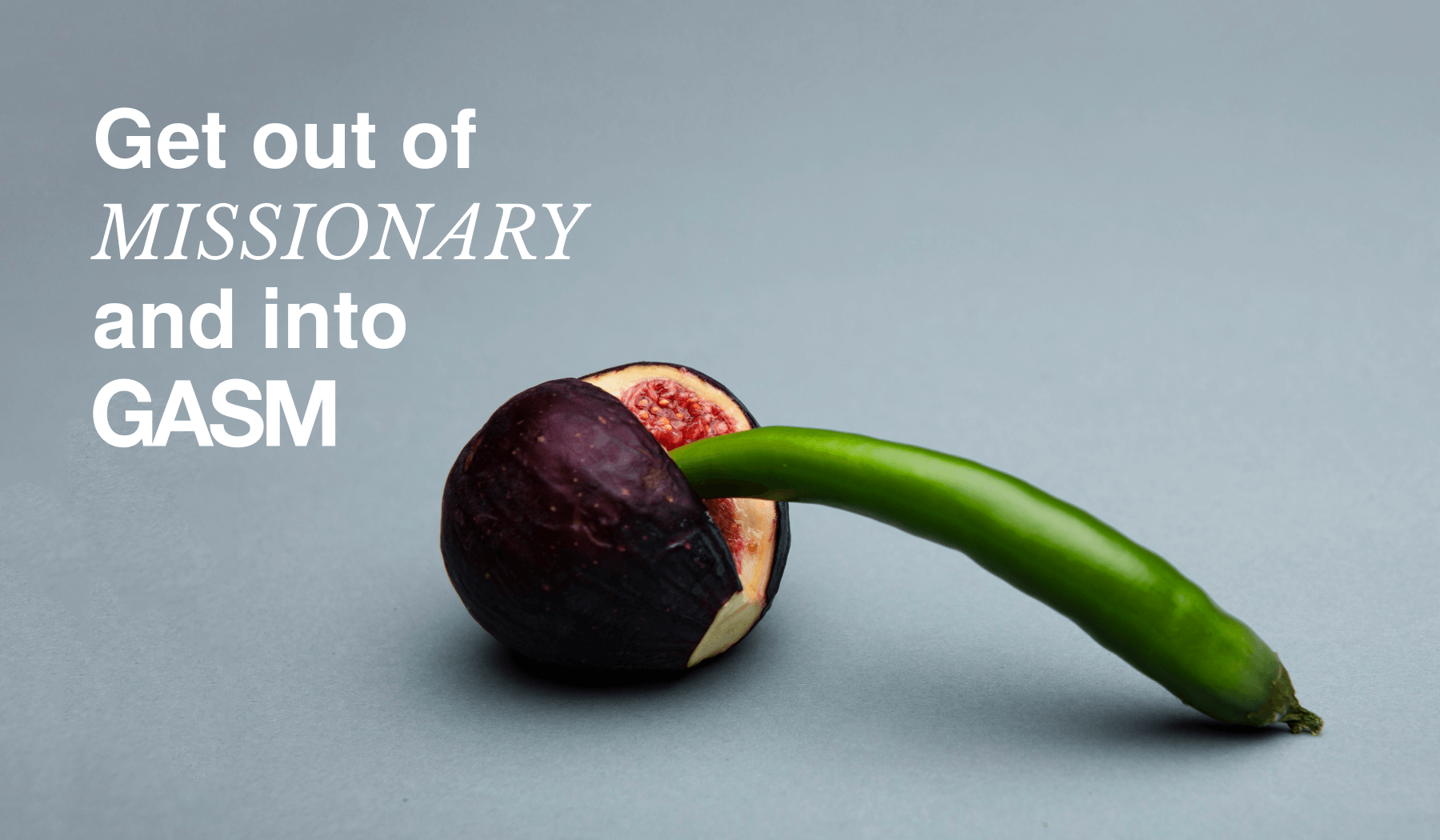Product growth and strategy case study
I worked alongside the GASM founders as they launched their app to get clear on the purpose, refine the audience, establish a path to profit, and grow usage.

This project required ongoing reflection on how to effectively engage men. What real problems are we solving, and do they need solving? Our work focused on finding product–market fit, driving meaningful engagement, and defining what successful retention would look like and why it was desirable.
To protect company confidentiality, specific numbers or insights have been obscured, altered or use placeholders where appropriate, unless the number is specified to highlight a change as a result of the work or a public stat. This project was unique in that, while there’s growing focus on women’s sexual wellbeing (with its own set of challenges), there’s still little aimed at men in a healthy, constructive way. We also identified a major gap in the dating space where sexual experiences, meaningful relationships, emotional maturity, and loneliness intersect. In terms of safety, relationships, and pleasure, the two women founders brought deep awareness and training, so that perspective was embedded in their approach and didn't need work. The project was highly LGBTQIAP+ inclusive, but after refining the audience, we focused on men in heterosexual relationships (shape inclusive) as they represented a significant portion of the initial audience.
2024 Project
The scope
A quick six-week project with Orbit29 to develop an audience, choose a product direction, embed testing processes, and create a product plan for significant growth and funding.
My role
Working as a Product Consultant to understand the audience and problems to focus on, develop a revenue strategy, create targeted testing, and support implementation.
Audience
Single and partnered men across anglophone countries who want to feel more connection and intimacy.
Bigger picture
Healthier and equitable relationships, more pleasurable experiences for everyone, less taboo with desires, and sexual education, increased play and fun.
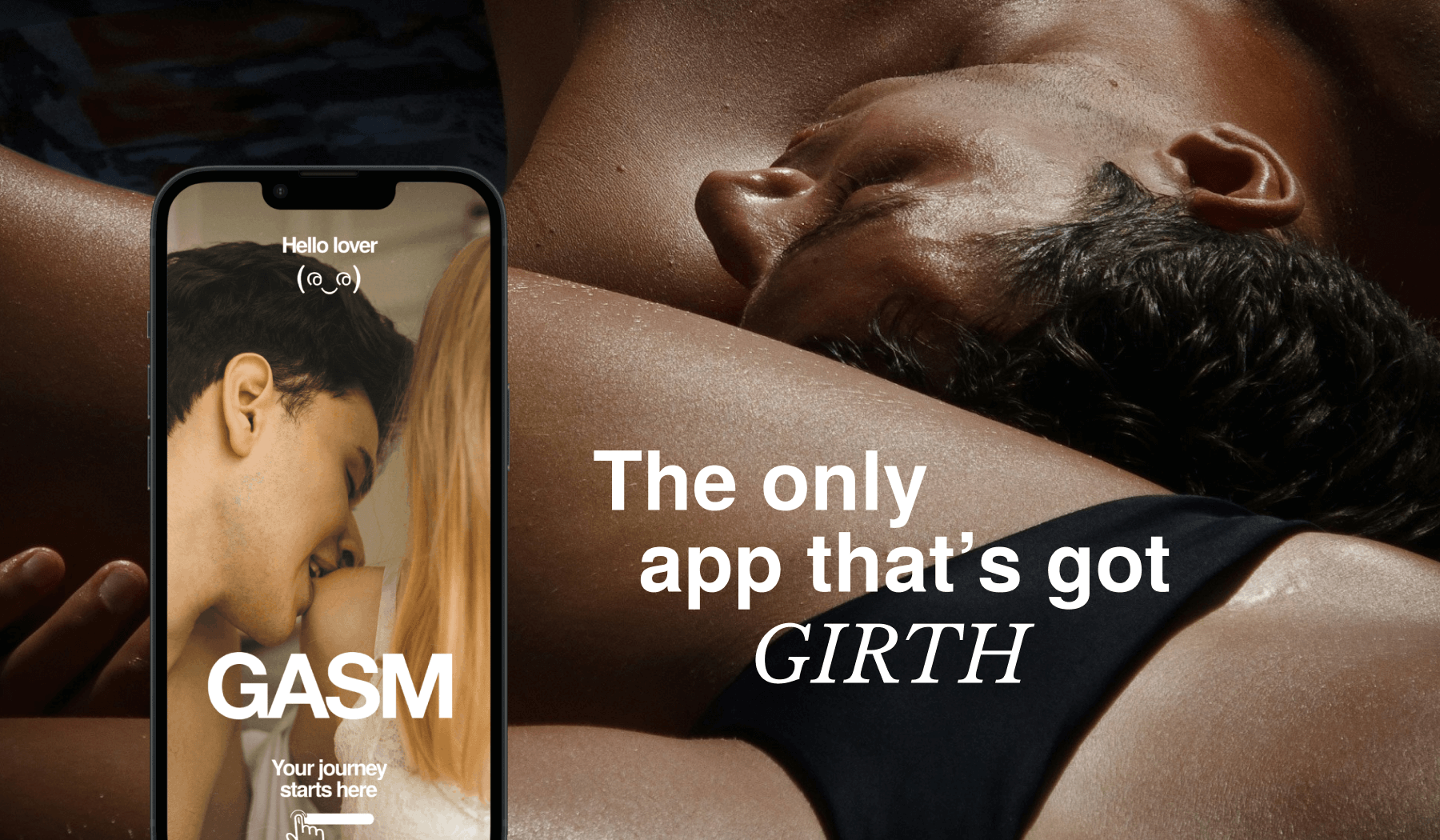
Analyzing the existing research and tests
Despite progress, deeper conversations around sex - particularly the cisgender pleasure gap for women - remain difficult and, in many cultures, taboo. Sex education is still largely woeful, and for many men, film and pornography serve as their primary sources of information. With a rising influence from certain men influencers, there also appears to be an increase in rough first sexual experiences reported by women. Moving to the bedroom, the pressures of parenting, work, social media, and gaming are often overwhelming leaving little room for intimacy. And at the same time, issues like sexual dysfunction and premature ejaculation appear to be on the rise. Then there is the gap.
Where do men learn about healthy sexual pleasure? Where do they talk about it or practice it?
This is where GASM aimed to step in, redefining how we think about sex. We connected with the founders to understand their journey so far with hundreds of notes and ideas. One of the co-founders at Orbit29 worked through feedback from their current trial, surveys, and research interviews, while I watched the interviews and explored the problem space in more depth so we would have a clearer picture (as many of the initial audience came from two specific personas and self-selected into this; an engagement level that is not common in the public). We then aligned our insights to define a clear starting point.
Understanding how and what other players were doing
I collated work from the research and combined it with academic papers, recent journalism, events, and a widesweep of the landscape sexual wellbeing was operating within. I mapped and clustered businesses in the ecosystem. This is a difficult space - outside of a few, most applications, courses, and workshops have relatively small paying audiences compared to their total adressable market (TAM). Even in sexual dysfunction where much of the money is found outside of the porn industry, medical solutions are a significantly larger revenue category than psychological change; the latter requires far more time and energy investment in self-development, and many aren't aware of it.
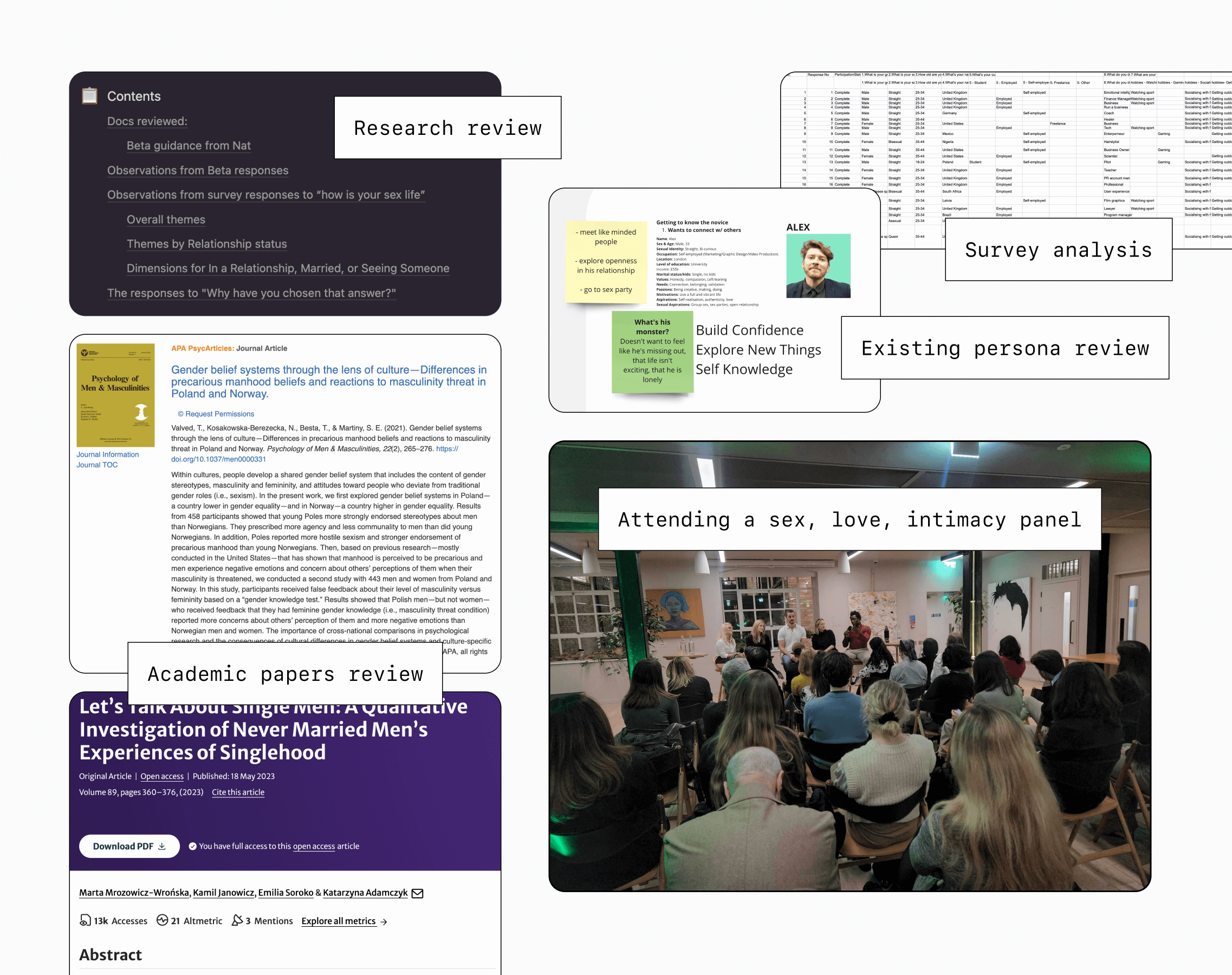
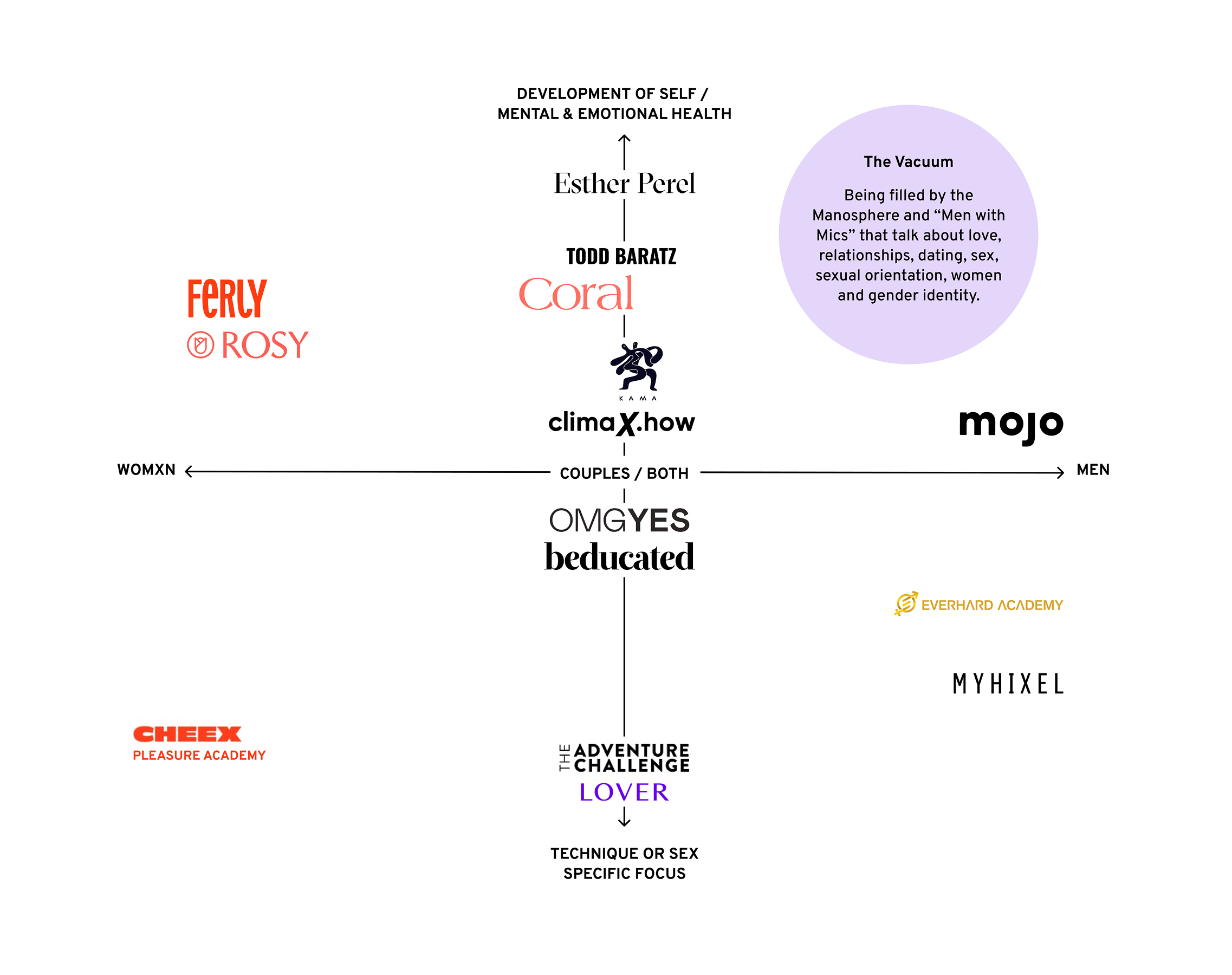
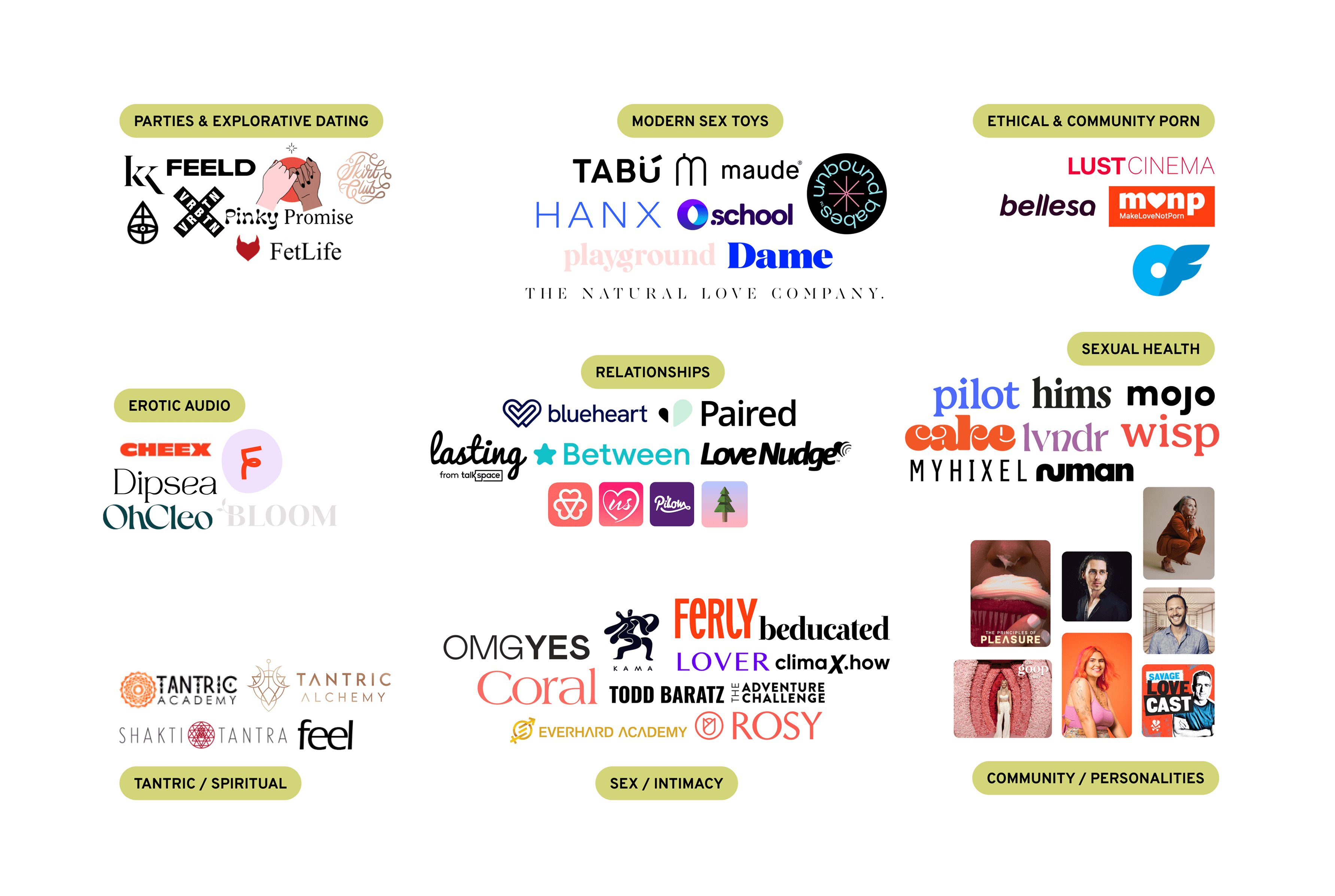

Figuring out which audience and problem to address
At this stage, the GASM app was finalizing launch preparations with initial content specifically on exploring pleasure, and there remained a big internal question of who was this for? Was this the kind of content men wanted to learn? Did the current niche group need to be a specific audience? Who should they be developing the next content for and what should it be? Did their need to be a difference in the content or journeys or usage for single or partnered men? I worked to determine what would need to exist for single or partnered men and presented back this information. There were a number of overlapping topics, and many that would need to be approached very differently. Intimacy as a single and/or dating man is a very different proposition to intimacy as a partnered man. I created numerous activities which we walked through together to uncover GASM's desires and priorities alongside the insights.
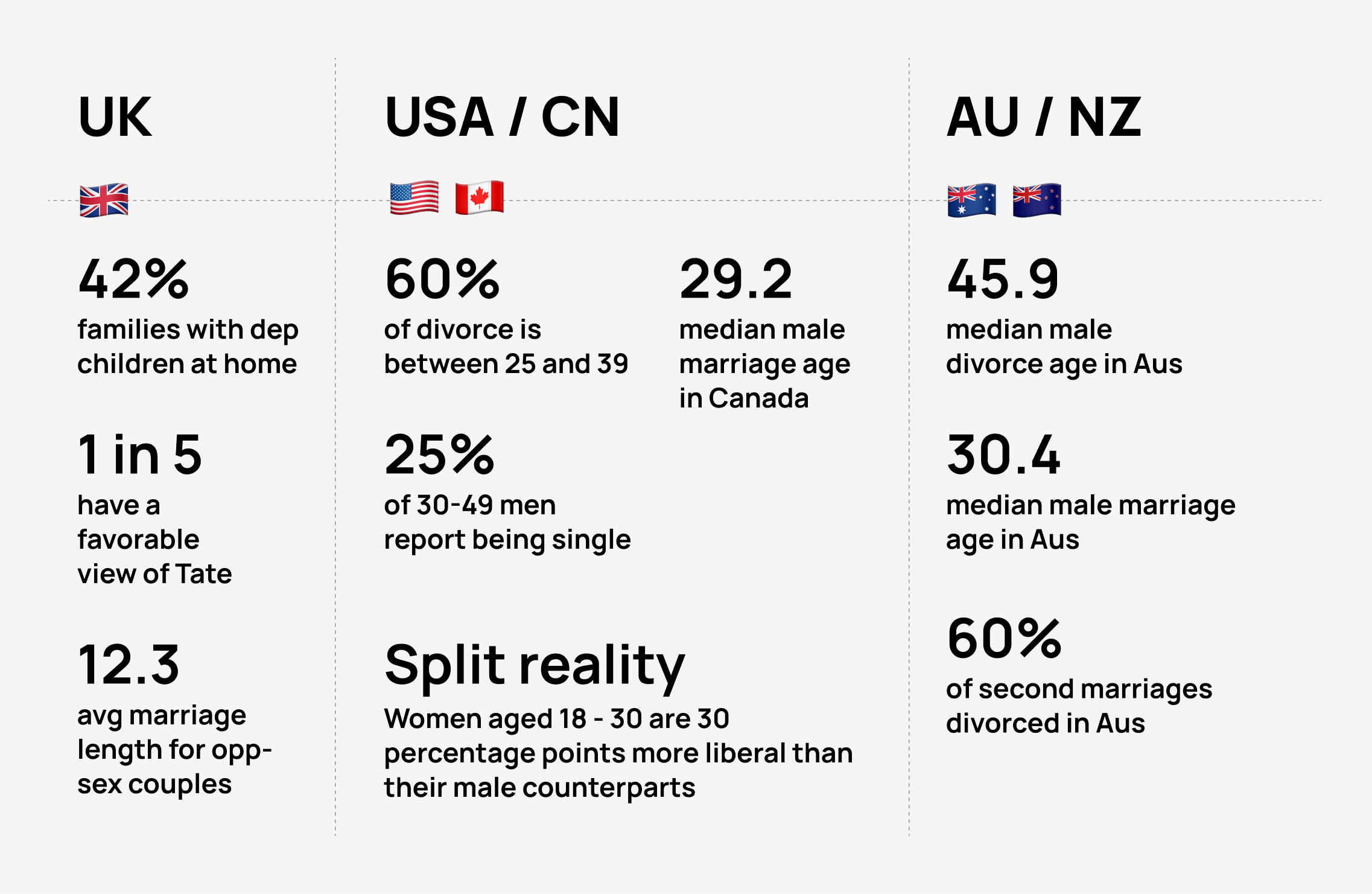
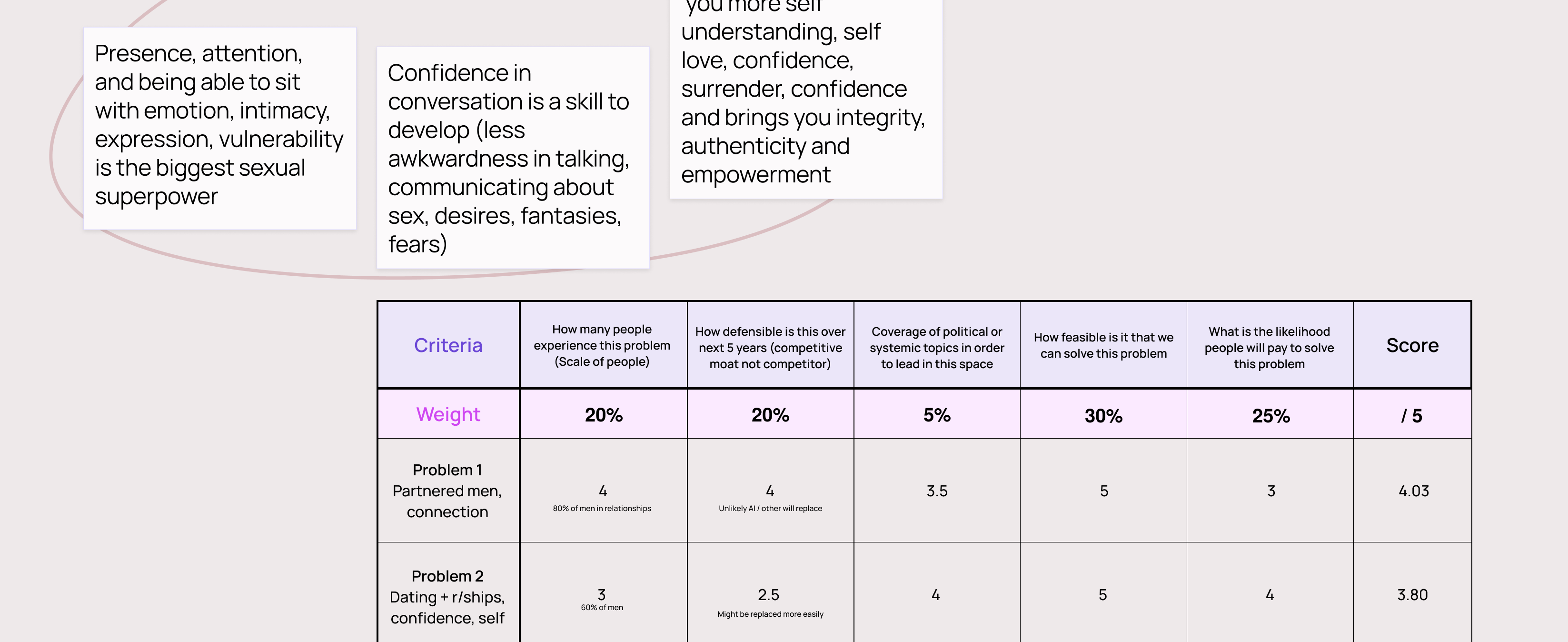
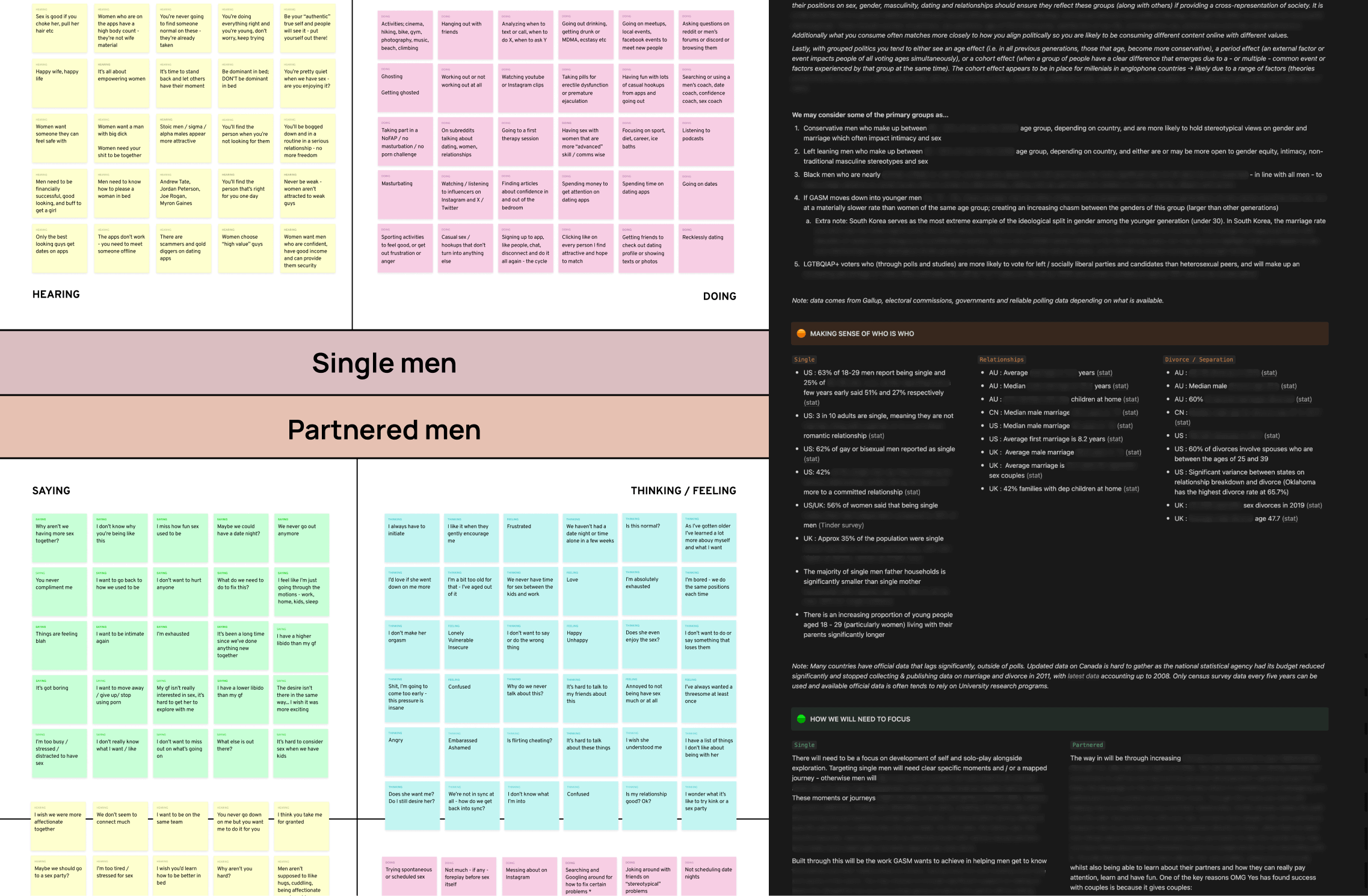
Let's talk about dating
If you've read any online discourse in the last couple of years you will have noticed that the general state of dating is not one that elicits joy. Churn rates on dating apps are high, but so are re-engagement rates. Millions of people feel low, burned out, and disconnected. Many men feel the apps and stats are stacked against them. For older people, re-entering the dating space might be horryifying, overwhelming, or liberating. For very young people it might be exciting or terrifying. And for everyone in between there might have been some flings or very meaningful relationships, and then it became a chore. Coming out of a pandemic, offline events were increasing and we could sense the rumblings of AI.
Would you outsource your dating to an AI assistant? Would apps begin churning out content to help single people improve their profiles, conversation skills, and dates (and if this was profitable, why hadn't they already with a captured audience)? Would AI profiles fix this part of the process? And ethically, are you helping good men attract the right women for them, or are you making it more unsafe for women? What's your moat if the AI is easily replicated? Added to this is the complexity of younger men and their political or social views in contrast to many women and theirs. This is the backdrop of dating during this moment. There's a lot to talk about, a lot to work in, and a lot to take on.
Apps need increasing revenues, so they need increasing numbers of users (particularly paying ones). As a result, they don't tend to work for how an ideal dating experience that doesn't need infinite YOY revenue would.
Working with the founders, we focused on partnered men, clarified audience needs, and aligned on problem areas. To support high growth, we identified risky assumptions and how to quickly test them.
Workshops for working out next steps
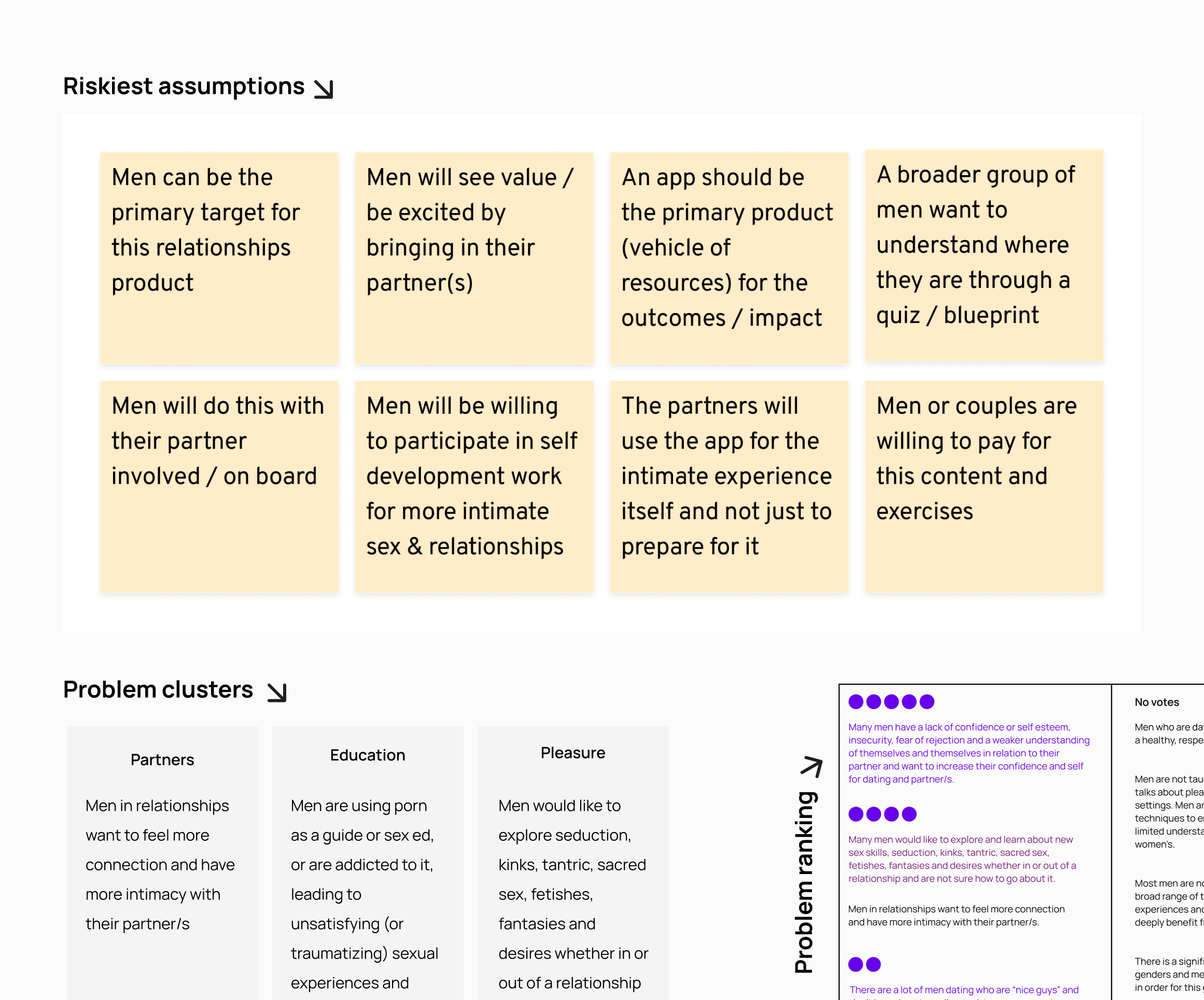
Creating sexual wellbeing content
During the workshops, we used the time efficiently to define content pillars and development outlines, helping GASM focus their time and budget on creating targeted, high-impact content. We conducted content research and aligned it with the identified problem clusters. From there, we expanded on each problem, exploring how it presents, how it feels, and what prevents men from addressing it. This gave us a clear foundation for developing content with the right outcomes, delivery methods, and messaging.
As a small team this also helps in the decision making process; do we need anybody else on board to be able to talk about X? How comfortable are we with Y? Are we prepared to do Z? Where do we feel our impact is the most?


Developing the product direction and next steps
With all this in place, I developed product propositions that outlined the target audience, their needs, the core value offered, and the business model to support it. Each proposition included additional revenue opportunities, pros and cons, competitive advantages, and realistic goals for user growth, revenue, and overall value. My research had also highlighted a number of other potential product directions that might be considered with testing. For example, Boomers are largely underserved in this market, have more time, and are often in a process of rediscovery post-children (empty nest) or the separation or death of a partner, which can activate a state of change that is often not easily accessible in other stages.
We needed to be clear on the value proposition so I hypothesized four hooks that could be tested for which drove better understanding and positioning with men. Is having a better sex life stronger than being a better partner? Or is getting the intimacy you crave with your partner stronger than being a better lover?
Finally, to address revenue growth and create realistic markers, I undertook a fairly deep dive into the revenue, profit, and users numbers of competitors to draw insights from the industry to support GASM with a pathway to profit, pitching, and positioning.



Creating a testing game plan for audience and payment
With a target audience and problem defined, I designed three tests to understand whether GASM could attract these men and whether they’d be willing to pay for something they saw value in. I hypothesized that, at this stage, value delivered outside the app (e.g. through a targeted workshop) would likely generate more willingness to pay than an app subscription. Events could later be integrated into the app, with a subscription base growing as the audience grew and content pathways matured. Each test was designed to be measurable and executable within two weeks. GASM had already done some great ad testing in the past on some specific platforms with really useful results, and we worked to work around some of the other platform testing challenges.
As GASM was in the process of designing out a specific area, we seized on this to spin it up outside the app with a couple of tools and test it first. This process also helped establish a repeatable testing process encouraging fast, low-risk validation of hypotheses before investing in resource-heavy solutions. Finally, since neither the current nor target audience had made a financial commitment yet, we also wanted to start getting the team accustomed to making the ask and exploring viable paths to monetization.
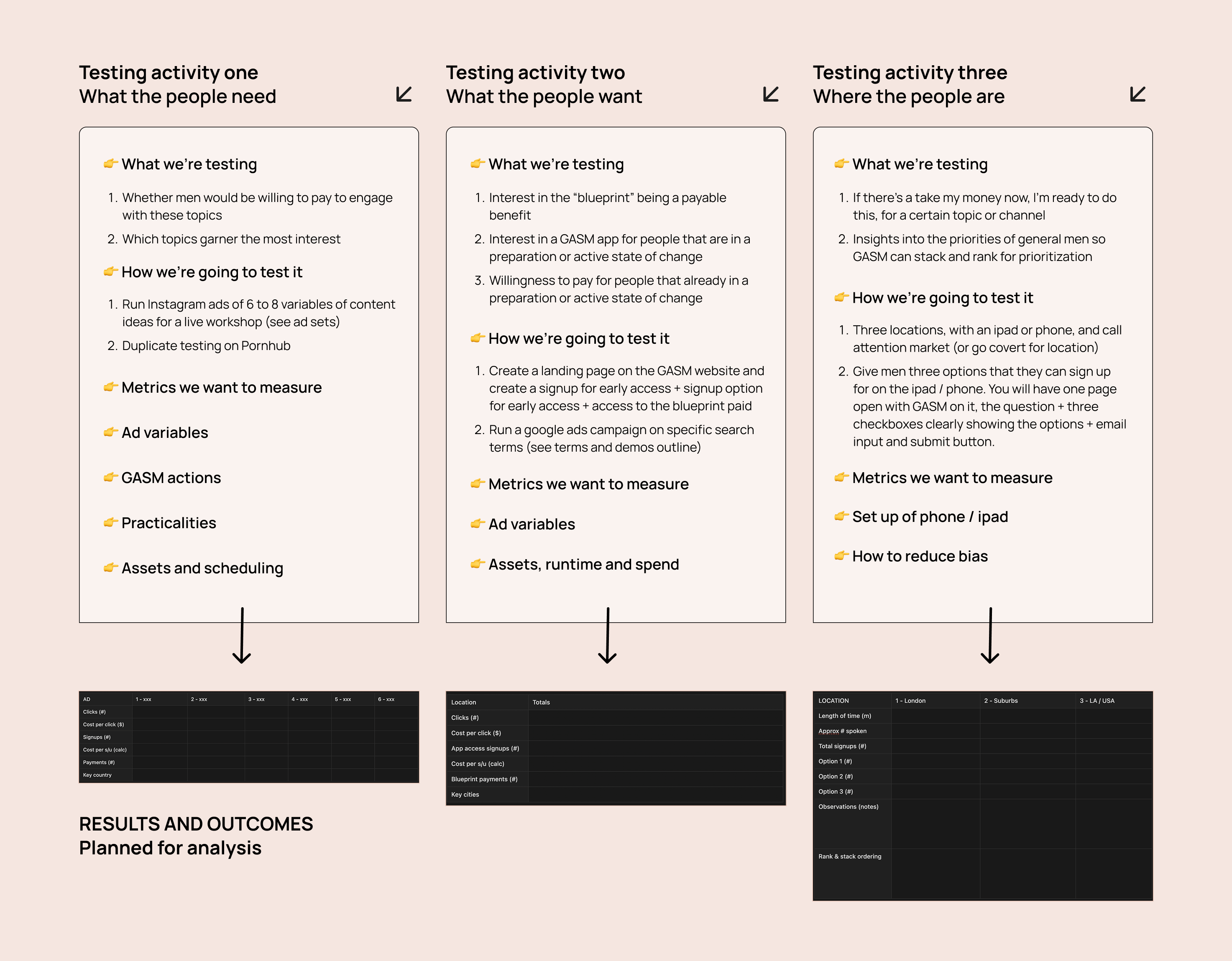
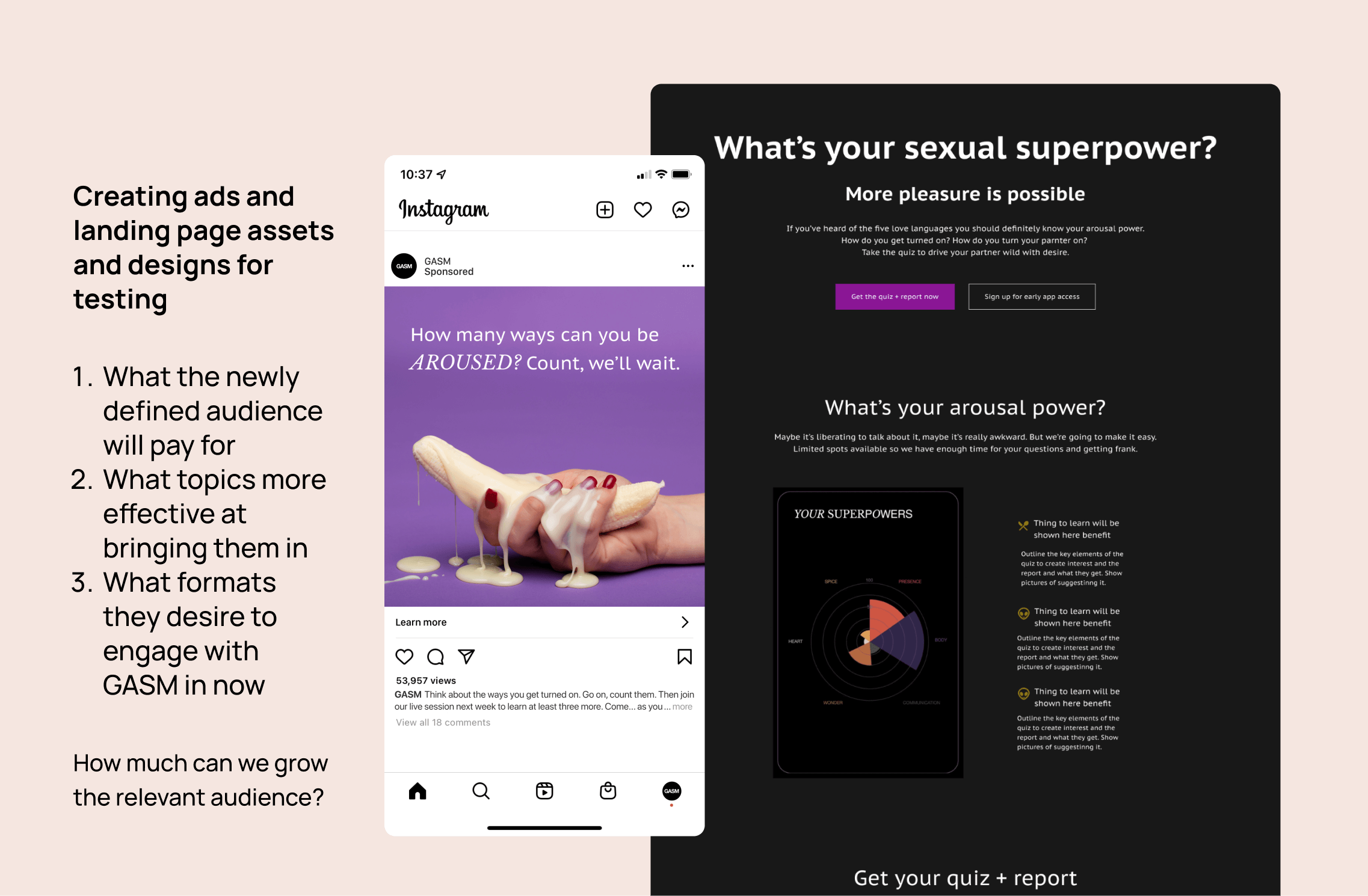

Creating useful personas to move forward with
With an expanded audience that also encompassed some of their existing niche base, GASM needed to get into the heads of these men and have a reference point. This audience could be refined to three useful personas to guide product features, ads, marketing, and testing. Since most personas tend to become outdated or overly generic, rather than constantly updating or adding new ones with each new insight, I recommended asking:
- Is it useful to know this?
- How deeply do we have to know this in order for it to be useful?
- What will we do with this knowledge?
- How will it inform a GASM decision or path forward?
- Is this decision worth the time we will invest in knowing this?
This would hopefully result in spending less time here but investing when it was going to shift something. Try for yourself: When you're struggling as a team to figure out what you need to know or focus on with your audience, ask which decision it will change, and how.
In terms of personas I spend more time thinking about what moves people to make the change, engage, or agitate for the outcome. These tend to shape product and marketing significantly. For an app like GASM, we really need to more deeply consider internal and external competition too. What are we competing with for time and energy?
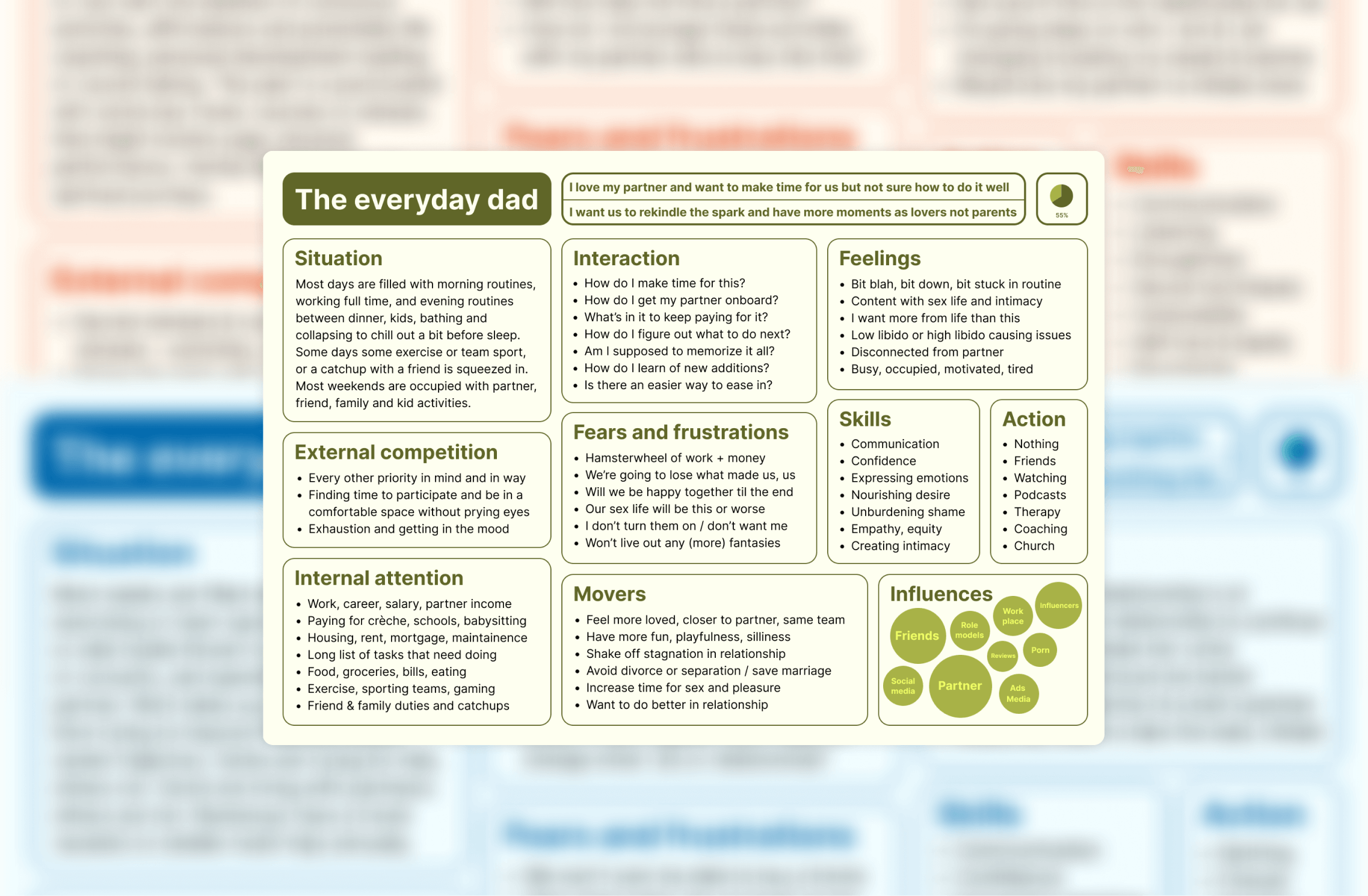
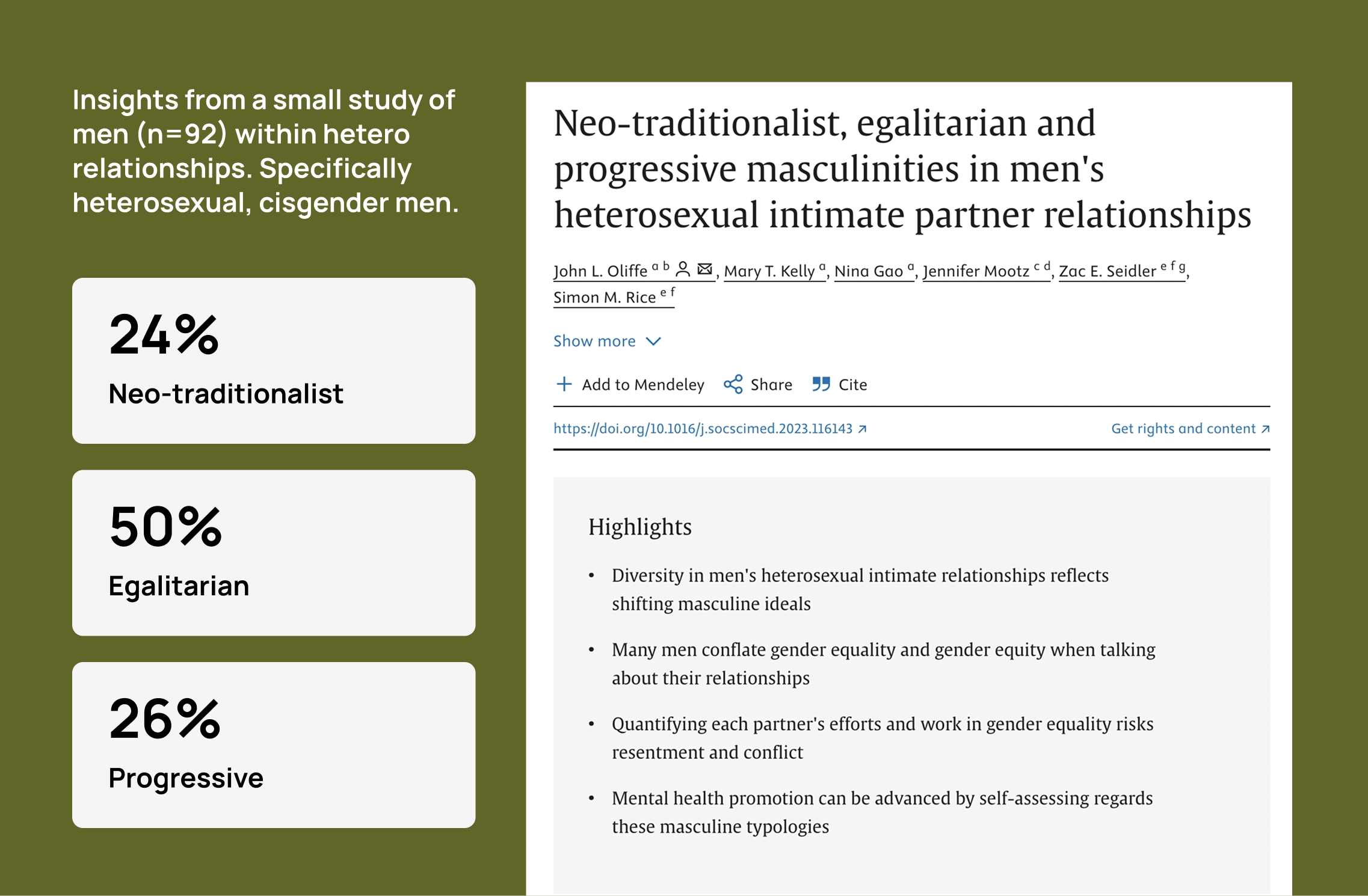
The strategic plan and steps to the first million
With ambitious revenue goals and the need for a focused plan, I developed a detailed first-year strategy centered on user growth, feedback, and revenue. Using their current base to generate initial growth and revenue this then quickly expanded into the larger audience with a logical pathway. I outlined five key data areas to track, along with a clear roadmap for reaching the first 1,000 paying users (a major milestone for any app). The plan included substantial marketing efforts. Throughout, we focused on simplification to reduce early-stage complexity, ease development, and enable more targeted, effective marketing tests. In order to sustain their work, GASM was stepping into a funding round and this plan provided the pathway to profit, learning to quickly prove in-and-out a number of hypotheses, adapt, and make relevant change whilst keeping things nimble.

Wrapping up with some marketing fun
👀 Close your eyes now if you blush easily!
As I worked to outline various channels and Marketing plans, I did my usual speed-drill and came up with a list of fun marketing lines. This space needs humor to lighten the mood and break the ice of something that can experience a wide range of emotions. Because many social platforms are very difficult with sexual wellbeing products we also needed tp test imagery that might get around some of the limitations (women's products or targeting to women in particular faces these). Tip: Look for "unporn" imagery if you're looking for your own. A big thanks to Deon for making these available for free use.
It was a joy to work alongside sharp, caring minds committed to making a positive impact and a world where people can fully, safely, and comfortably express themselves.


